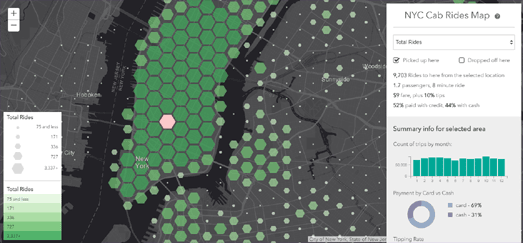Сообщения
Сообщения за май, 2018
Mapping New York Taxi Journeys
- Получить ссылку
- X
- Электронная почта
- Другие приложения
The Interactive Moll Map Collection
- Получить ссылку
- X
- Электронная почта
- Другие приложения
Hawaii's Lava Flows from Space
- Получить ссылку
- X
- Электронная почта
- Другие приложения
Swiss Hiking Trails in 3D
- Получить ссылку
- X
- Электронная почта
- Другие приложения
The Interactive Mao Kun Map
- Получить ссылку
- X
- Электронная почта
- Другие приложения
The Memorial Day Map
- Получить ссылку
- X
- Электронная почта
- Другие приложения
The Live Jurassic World Dashboard Map
- Получить ссылку
- X
- Электронная почта
- Другие приложения
The UK Population Born Overseas
- Получить ссылку
- X
- Электронная почта
- Другие приложения
Where Disasters Happen
- Получить ссылку
- X
- Электронная почта
- Другие приложения
The Berlin Building Age Map
- Получить ссылку
- X
- Электронная почта
- Другие приложения
Repeal the 8th Referendum Results Maps
- Получить ссылку
- X
- Электронная почта
- Другие приложения
The Sexist Streets of the World
- Получить ссылку
- X
- Электронная почта
- Другие приложения
Viewing Real-Time Satellite Imagery
- Получить ссылку
- X
- Электронная почта
- Другие приложения
The Virtual Globes Museum
- Получить ссылку
- X
- Электронная почта
- Другие приложения
The Spy Planes Spying on Texas
- Получить ссылку
- X
- Электронная почта
- Другие приложения
Spy Satellites Spy Shrinking Rain Forest
- Получить ссылку
- X
- Электронная почта
- Другие приложения
China's Great Sea Grab
- Получить ссылку
- X
- Электронная почта
- Другие приложения
Travel Time Quantiles
- Получить ссылку
- X
- Электронная почта
- Другие приложения
Urbanization in England & Wales
- Получить ссылку
- X
- Электронная почта
- Другие приложения
The 50 Most Dangerous Cities in the World
- Получить ссылку
- X
- Электронная почта
- Другие приложения
Mapping the History of the World
- Получить ссылку
- X
- Электронная почта
- Другие приложения
The New York Subway Rental Map
- Получить ссылку
- X
- Электронная почта
- Другие приложения
How Americans Get to Work
- Получить ссылку
- X
- Электронная почта
- Другие приложения
The Real-Time Global Air Pollution Map
- Получить ссылку
- X
- Электронная почта
- Другие приложения
The Worst Drivers in Britain
- Получить ссылку
- X
- Электронная почта
- Другие приложения
101 Mass Shootings in 2018
- Получить ссылку
- X
- Электронная почта
- Другие приложения
The Royal Wedding Map
- Получить ссылку
- X
- Электронная почта
- Другие приложения
The Plastic Polluted Pacific Ocean
- Получить ссылку
- X
- Электронная почта
- Другие приложения
Can You Guess the City?
- Получить ссылку
- X
- Электронная почта
- Другие приложения
Mapping LA by Night
- Получить ссылку
- X
- Электронная почта
- Другие приложения
How Gerrymandered is Your State?
- Получить ссылку
- X
- Электронная почта
- Другие приложения
Erosion of the World's Coastlines
- Получить ссылку
- X
- Электронная почта
- Другие приложения
The Car Crash Prediction System
- Получить ссылку
- X
- Электронная почта
- Другие приложения
Open Palestine
- Получить ссылку
- X
- Электронная почта
- Другие приложения

































